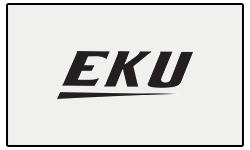From COVID-19 to Mpox, How Can We Engage Communities in Cameroon?
Abstract
Nadia Jacqueline Mandeng, Linda Esso, Moustapha Nsangou, Nasser Bangai Tizi, Ingrid Kenko, Rodrigue Ntone, Dominique Olomo Nama, Luc Thierry Bihina, Maidey Hamadama, Edgard Lekeufack, Danielle Sandra Yopa, Armelle Ngomba, Marie Lumiere Ntyam Mbo, Erick Tandi, Philomene Zintsem, Stella Wilfried Tameu, Thaddee Onana, Sandrine Belinga, Diana Atongapai, Yap Boum II, Hassan Ben Bachire and Georges Alain Etoundi Mballa
Background: COVID-19 pandemic exposed major challenges for involving communities in Cameroon through risk communication. To solve these problems and improve responses to future epidemics including Mpox, national study was carried out to identify the most appropriate communication channels and tools for involving communities during health emergencies.
Methodology: Convergent mixed-methods study was conducted over three months across all region. Quantitative component involved a stratified cluster sampling of participants aged 18 and above who resided in Cameroon since March 2020, with data collected via an electronic form on KoboCollect. Data analysis used Python 3.12 and Excel, with a significant threshold set at p< 0.05. Qualitative component included semi-structured interviews and focus group discussions, transcribed and analyzed using NVivo.
Findings: A total of 10,400 participants were surveyed, and 5,141 households visited. Television (23.56%), radio (21%), and social media (15.91%) were most frequently used communication channels. Visual materials like posters (42.97%) being particularly attractive. Statistical analysis revealed significant influences on channel used based on comorbidities (P < 0,001; OR =-0, 44 [-0,64 - - 0,24]); secondary education level (P< 0,001; OR =0,42 [0,24 – 0,59]) and university level (P < 0,001; OR=0,42 [0,20 – 0,65]). Health information provided by health leaders (34.12%) and community leaders (22.20%) was deemed most reliable.
Interpretation: Television and radio remain essential communication channels, while visual media are highly appealing to diverse populations. Contextualizing Risk Communication and Community Engagement, using trusted community and health leaders, will strengthen response to current Mpox epidemic and future outbreaks.



